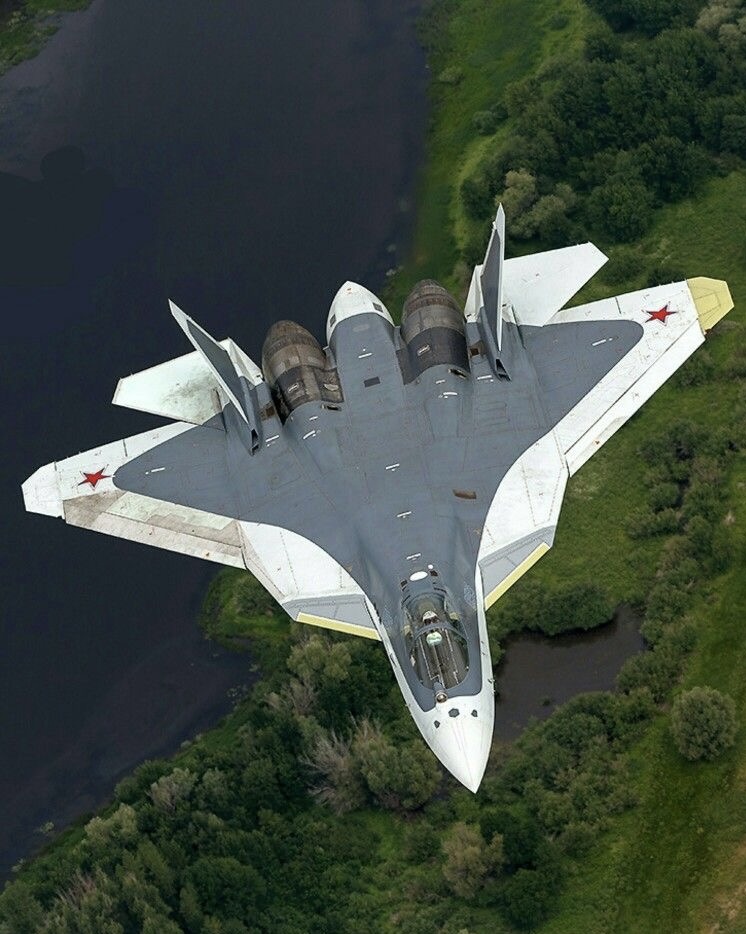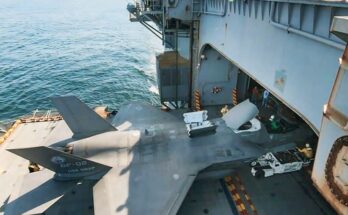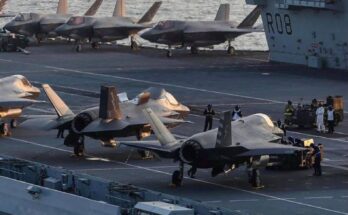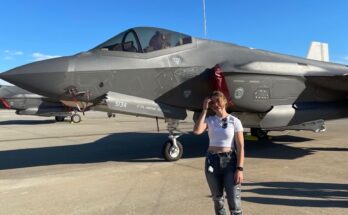
At first glance, the Su-57 distinguishes itself through its angular design, blended fuselage, and internal weapons bays, which reduce radar cross-section and enhance stealth performance. Unlike earlier Russian aircraft, which often prioritized agility and raw power, this fighter integrates stealth features from the ground up. Its airframe uses radar-absorbent materials and shaping techniques that help minimize detection. The twin-engine configuration is set wide apart, providing stability and thrust while accommodating internal weapon storage.
Performance is central to the Su-57’s identity. The aircraft is designed to achieve supersonic cruise without relying on afterburners, a trait known as “supercruise.” In addition, it boasts extreme agility thanks to thrust-vectoring engines and an advanced aerodynamic profile. These features give it an edge in close-range dogfights, a traditional strength of Russian aircraft design. The combination of stealth, speed, and maneuverability aims to allow the Su-57 to operate effectively across different mission types, from air dominance to ground strikes.
The cockpit is fitted with modern avionics and sensor fusion technology, giving the pilot access to real-time battlefield information. The aircraft’s radar and infrared systems provide wide detection ranges, while its electronic warfare capabilities are designed to disrupt or evade enemy defenses. These features bring the Su-57 closer in line with Western fifth-generation standards, though the exact effectiveness of these systems remains closely guarded by Russian defense circles.
One of the Su-57’s defining aspects is its weapons capacity. Internal bays allow it to carry air-to-air and air-to-ground missiles without compromising stealth. When stealth is less critical, external hardpoints can be used to expand its payload. Russia has tested a range of modern weapons with the aircraft, including hypersonic missiles, suggesting that the Su-57 could eventually serve as a delivery platform for next-generation armaments.
Despite its promise, the Su-57 program has faced hurdles. Development began in the early 2000s, but delays, cost concerns, and technical challenges slowed progress. Production numbers remain limited, with only a small fleet currently in service compared to Russia’s large inventory of older fighters. Analysts often point out that while the Su-57 is a capable aircraft, it has yet to be produced in numbers sufficient to reshape Russia’s air power.
Nevertheless, the Su-57 stands as a symbol of Russian aerospace ambition. It reflects decades of experience in fighter design and a determination to maintain technological parity with leading air forces. Whether viewed as a rival to Western jets or as a test bed for future systems, the aircraft underscores Russia’s ongoing commitment to high-end military aviation.
In conclusion, the image of the Sukhoi Su-57 captures more than just a modern fighter jet; it represents an evolution in design philosophy and a statement of capability. By blending stealth, agility, and firepower, the Su-57 aims to ensure Russia’s place in the competitive landscape of next-generation air combat.


